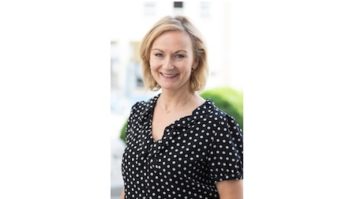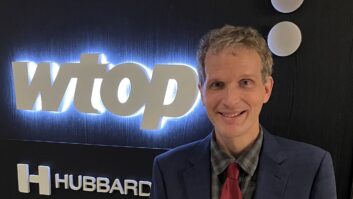Engineers attending the NAB Radio Show Technical Certification Workshops will have an opportunity catch up on issues and technologies facing the profession. A certificate will be awarded to attendees, applicable for SBE recertification credit.
Three workshops are scheduled. “AM/FM Antenna Certification” is on Wednesday Oct. 1 from 8 a.m. to 4 p.m. A “Digital Radio Certification Workshop” is set for Thursday, 9 a.m. to 5 p.m. The “AM/FM Transmitter Certification Workshop” is Friday, 9 a.m. to 4 p.m.
Maintenance and troubleshooting of AM and FM antenna systems, and how to deal with the FCC concerning antenna issues, will be the focus of the first workshop.
Tom Silliman, president of Electronics Research Inc., states, “This year we are adding a consulting engineer to the presentation, Charles Cooper from du Triel, Lundin and Rackley Inc. I thought that having Charles would add to the experience. Charles will add insight from the consulting side of the business as opposed to us manufacturing guys.”
Cooper will cover FM field strength measurements in addition to a discussion of filing procedures and other topics relating to consulting issues. Also contributing to discussion of consulting issues will be Benjamin Dawson, president of Hatfield & Dawson.
Participating as well is Bob Surette, manager of RF Engineering for Shively Labs.
“The implementation of HD Radio is uppermost in the minds of broadcasters and engineers,” he said. “Learn what it takes to implement HD Radio and put the myths and misinformation to rest. Find out how isolators play an important role in IBOC transmission technology for multi-station installations.”
Topics will include high-powered injection, interleaving antennas and back — feeding multi — station combiners and antennas. Ronald Rackley, a partner in du Triel, Lundin and Rackley, will contribute his expertise in AM directional antenna systems and other areas.
0s and 1s
The “Digital Radio Certification Workshop” will involve three new and significant technologies.
Steve Church, founder and CEO of Telos Systems, states forthrightly, “It’s inevitable. Just as PCs are universally used for editing and delivery of audio in radio stations, it is going to be Cat — 5 for everything — audio and data together on the same network.
“Live low-delay audio will utilize Voice over IP (VoIP), taking advantage of this low-cost and capable technology.”
Church, whose company is offering a line of Ethernet studio audio products, will delve into the applications of IP packet networks, VoIP telephony, Ethernet switches and routers, copper or fiber interconnection topologies, maintenance and security issues.
“HD Radio Conversion 101,” the second topic of the Thursday workshop, will be presented by Jeff Detweiler, broadcast technology manager for Ibiquity Digital Corp. and Scott Stull, director of broadcast business development for Ibiquity.
“My presentation is an overview of HD Radio technology,” Detweiler said. “It will serve as a springboard for the HD Radio data and implementers’ panel. Simply stated, it will arm the attendee with questions for the implementers’ panel and case studies.”
Among the subjects: definition of the HD Radio concept, regulatory status, commercial rollout of stations and receivers, AM and FM HD Radio waveforms, and an overview of AM and FM HD Radio implementations.
Stull said, “With broadcaster rollout well under way, and station commitments growing, I expect this will be a very popular topic at the Radio Show. The new encoding software incorporating Ibiquity’s HDC codec offers a big improvement in the audio quality of HD Radio.
“Since stations are now implementing the technology commercially and not just as test stations, Ibiquity can also step out of the way a little and let others describe their experiences.”
A former executive at Ibiquity is E. Glynn Walden, now a consultant, who will also speak. Walden will look at new methodology for presenting AM coverage and interference data.
“More — powerful computers have allowed a more — accurate representation of AM signal strengths and interference,” Walden said.
“My presentation will cover the methodologies used to produce AM tiled matrix maps where signal strengths and interference are represented by colored tiles depicting the represented data. The presentation will show how the data can be used to graphically represent population receiving a given signal level, quality of reception, and population lost to interference,” he continued.
“This presentation will show how these techniques are used to depict day and night coverage as well as desired to undesired (D/U) ratios for co-adjacent channels. giving, for the first time, a total look at the performance of AM stations.”
Given the controversy concerning AM digital signals’ alleged damage to nighttime skywave coverage, this will be an important session.
Tx
Perhaps the most important component of the broadcast chain, the transmitter, is the subject of the “AM/FM Transmitter Certification Workshop,” hosted by John Bisset, RF district sales manager for Harris Corp. and author of the column Workbench in Radio World.
Beginning with basic transmitter principles and moving to basic, real-world troubleshooting, the workshop aims to arm attendees with sufficient knowledge so he or she no longer has to view the transmitter site as the “black hole” of the operation.
A highlight of the workshop is a panel of representatives from major transmitter manufacturers discussing maintenance tips for their products.
Attendees will hear about engineers’ disasters during the “Chief Engineers’ Lessons Learned” panel. A checklist of transmitter site maintenance duties will aid in avoiding lessons learned the hard way.
Last will be a discussion to prepare the engineer for those dreaded words “We’re off the air” and how to respond competently.












